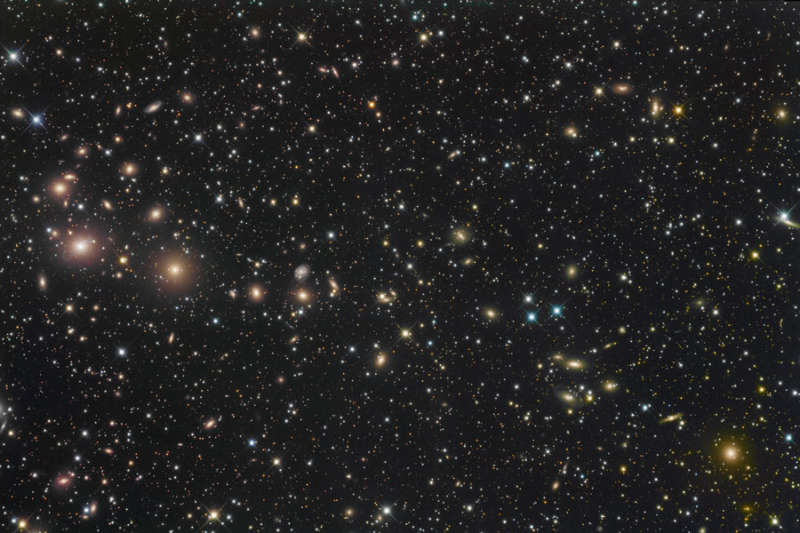Credit & Copyright: Bob Franke
Explanation:
Here is one of the
largest objects that anyone will ever see on the sky.
Each of these fuzzy blobs is a galaxy, together making up the
Perseus Cluster, one of the closest
clusters
of galaxies.
The cluster is seen through a foreground of faint stars in our own
Milky Way Galaxy.
Near the cluster center, roughly 250 million light-years
away, is the cluster's dominant galaxy NGC 1275,
seen above as a large galaxy
on the image left.
A prodigious source of
x-rays and radio emission,
NGC 1275 accretes
matter as gas and galaxies fall into it.
The Perseus Cluster of Galaxies, also cataloged as Abell 426,
is part of the Pisces-Perseus supercluster
spanning over 15 degrees and containing over 1,000 galaxies.
At the distance of NGC 1275, this view covers about 15 million
light-years.
1999 2000 2001 2002 2003 2004 2005 2006 2007 2008 2009 2010 2011 2012 2013 2014 2015 2016 2017 2018 2019 2020 2021 2022 2023 2024 2025 |
Yanvar' Fevral' Mart Aprel' Mai Iyun' Iyul' Avgust Sentyabr' Oktyabr' Noyabr' Dekabr' |
NASA Web Site Statements, Warnings, and Disclaimers
NASA Official: Jay Norris. Specific rights apply.
A service of: LHEA at NASA / GSFC
& Michigan Tech. U.
|
Publikacii s klyuchevymi slovami:
Perseus cluster - galaxy cluster - NGC 1275 - Skoplenie galaktik
Publikacii so slovami: Perseus cluster - galaxy cluster - NGC 1275 - Skoplenie galaktik | |
Sm. takzhe:
Vse publikacii na tu zhe temu >> | |
